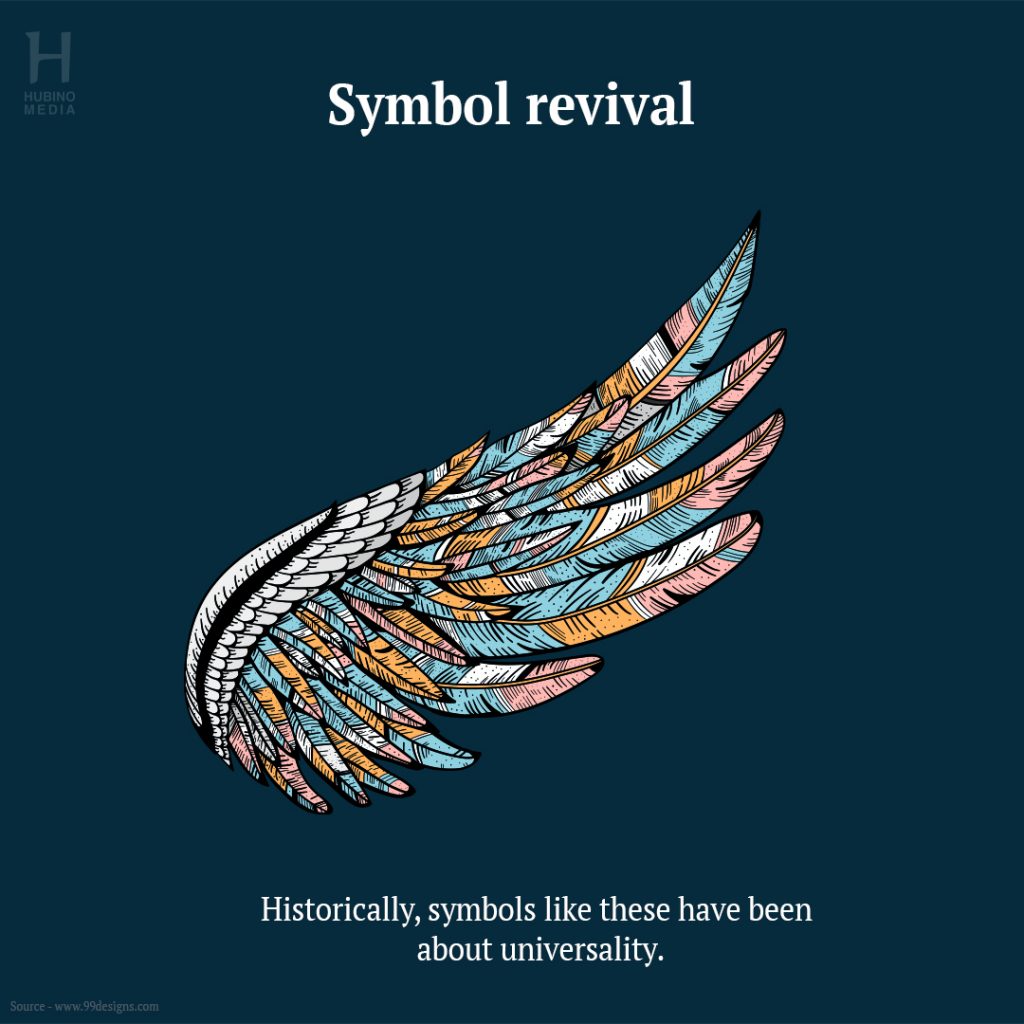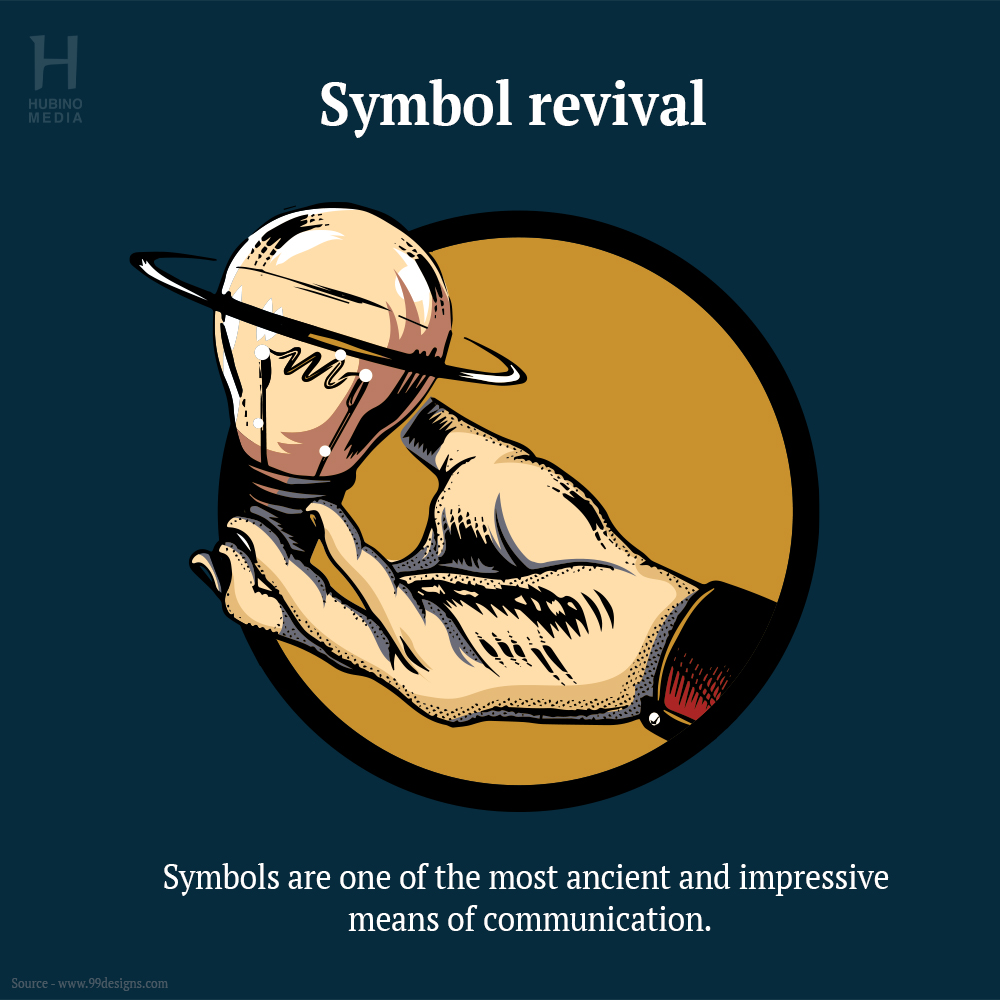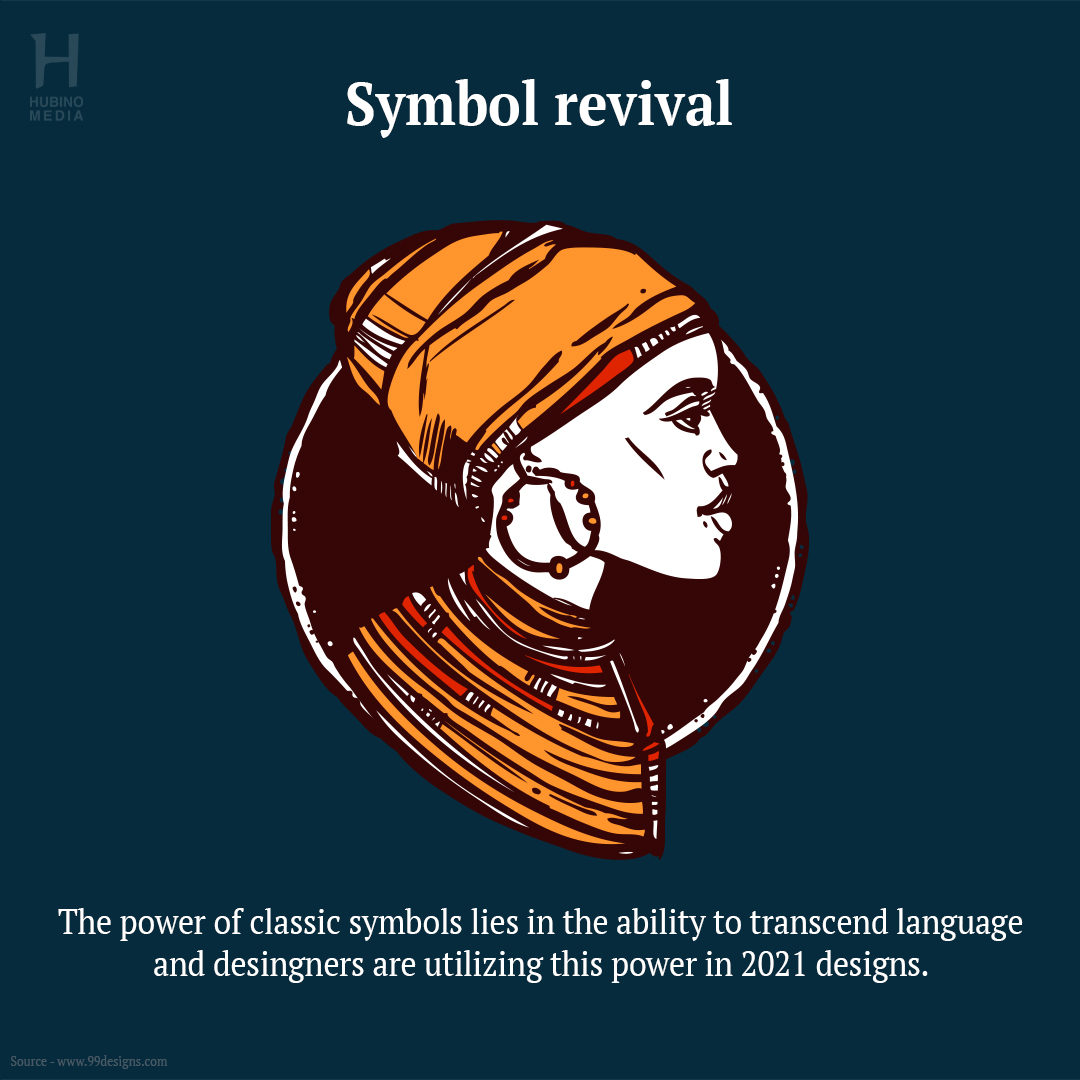Humans originally utilised symbols to represent words and concepts around 8,000 years ago. Somewhere between 70,000 BC and 7000 BC, primitive peoples from all over the world laid the foundations of the graphic arts by painting symbols in caves. Since then, from pigments to printing machine symbols have revolutionised the way humans live and created new strategies to cope with an unpredictable world. So it’s no surprise that in this digital era that introduced stylization and adaptability many designers have turned to symbolism to create a sense of community and oneness.
Symbols
Symbols are one of the most ancient and impressive means of communication and hence designers started using symbols as a form of visual expression to comprehend culture and simplicity to the viewer. In the design world, a symbol is a combination of graphic elements that can be used to represent a brand’s identity, communicating its story and influencing the way it is perceived by consumers.
Graphic designers frequently combine the use of existing symbols with the creation of new, unique symbols in their work. It’s crucial to know where many common symbols came from and how they’ve been used in visual language throughout history. With that said, there have been a staggering number of symbols used throughout human history. Lets see few types of symbols
Nature Symbols
Nature is without a doubt one of the most beautiful things on the planet. It has the ability to make you both joyful and sad. It can be both relaxing and frightening. It’s full of mysteries and secrets. Nature always manages to surprise and astonish us, no matter how much we try to delve deeper. More importantly, we are surrounded by nature at all times. Nature is without a doubt one of the most beautiful things on the planet. Some of the symbols of Nature that designers are inspired will be floral, animals, forest, fire, rain, sun, earth, etc.
● Floral symbols often infuse plant imagery with growth-related meanings like rejuvenation, serenity and aspiration. Modern designers even tend to take advantage of curling vines and roots as framing elements.
● Animal symbolism frequently identifies animals with specific, personified attributes. Through mythology and storytelling, these attributes have been developed over millennia. For example, lions represent royalty, doves represent peace, bulls represent fury, and dogs represent loyalty. Animal parts can also be isolated for symbolic purposes. Wings are typically used to signify freedom, antlers are often used to represent power, and claws, talons, or tusks are often used to represent strength.
Zodiac Symbols
The elements of nature and their attributes are specified further within zodiac signs. While these signs are based on celestial constellations, they each represent a distinct animal and correspond to the four natural elements of Earth, Water, Air, and Fire. Designers nowadays frequently employ zodiac symbols, as well as their animals and elemental colours, as shorthands for traits that encapsulate the theme of their work.
Goddess Symbols

Plants and animals are the most apparent topics for nature symbolism, but for a long time, humans or more precisely gods and goddesses shaped like humans served as personifications of nature. Artemis, Pan, and Gaia are three well-known Greek goddesses. More often than not, these will combine to form a single goddess mother, sometimes known as Mother Nature. Designers nowadays employ goddess motifs to relate to nature as a blessing, an icon of the natural world’s wisdom and strength. Starbucks, a global café business, has a Twin Tailed Siren from Greek mythology as its emblem. The twin tail sirens were said to be lovely in Greek mythology. These were, however, hazardous sea animals. They were noted for their beauty and melodic singing, which they used to entice sailors and seafarers to commit suicide. As a result, the company’s logo represents a preoccupation with a habit, namely, coffee consumption. As a result, the brand’s messaging is that their coffee is of exceptional quality and that customers are enamoured with it.
Celestial Symbols
Although the night sky is a natural phenomenon, most people have never seen it in this light. The heavenly universe is mysterious, isolated, and filled with enigmatic signs and symbols at night. As a result, heavenly symbolism in design is frequently used to convey mystery and mystical significance. The sun is one of the most prominent celestial emblems, typically connected with monarchy because it is the source of light and the most powerful object in the sky. Solar symbols generally imply power and excitement for modern designers, giving designs a slight heraldic feel. The sun is gold and typically mythologized as masculine, whereas the moon is silver and often mythologized as female. Both the sun and the moon signify cycles, but the moon goes through more spectacular changes and has become a symbol of metamorphosis every month. The crescent is one of the most well-known moon shapes. The crescent is often associated with mysticism since it appears to be an impossible shape in the sky and appears in the frigid darkness of night. Today’s designers utilise this symbol to imbue companies with a sense of transformational enchantment.
Geometric Symbols

Humans have historically understood their world through repeated shapes, in addition to nature and cosmology. This has a lot to do with pattern recognition: individuals are wired to notice repetition in the environment around them, and fundamental geometry is one of the most common repeating elements. Simple geometry has the property of expressing purity and balance, both of which are ripe for symbolic interpretation. For example, circles can represent infinite cycles, squares can represent stability, and an equilateral triangle is simply an arrow pointing upwards, and thus is often connected with divinity.
Sacred geometry, which is a broad word for geometrical symbols with spiritual significance, can be thought of as an ancient people’s means of visualising and tapping into the universal power of mathematical proportions. Yin yang, the pentagram, golden spiral, mandala, and other sacred geometrical symbols can be found in many different cultures. These symbols are frequently linked with specific cultures and/or faiths, so you should think about why you’re employing one in your project. It is not only courteous, but it is also likely that consumers will react unfavourably to a brand that appropriates cultural icons for commercial advantage.
Trendy Symbols
Every day, we employ thousands of symbols. When we don’t have the words to explain our feelings, we use them to communicate information and express emotions. Symbols are images that we use in business, life, and design to express tales. The ampersand is a favourite among designers (&). The symbol represents an invitation to adventure, camaraderie, and a chance to express creativity and play around for designers. The @ sign originally appeared in 1971, when American computer programmer Ray Tomlinson, dubbed “the creator of email,” sent the first electronic message, using the ubiquitous symbol (@) to indicate the recipient’s location. Accounting and programming specialists are the most common users of the @ symbol today, but creative designers are just behind them. The hashtag (#), a symbol with numerous names, is nevertheless the symbol we know and love. The hashtag is now frequently used in memes, videos, conversations, social movements and design.
Symbols are everywhere around us, firmly embedded in our minds. When words aren’t enough, we turn to them. They aid in the expression of emotion, the communication of information, the engagement of clients, and the personalization of cold written words. They’re adaptable and definitely timeless. Graphic design, like all forms of communication, is based on symbols. While the ubiquitous symbols and their meanings have a lengthy history, designers must do more than just repurpose them.
